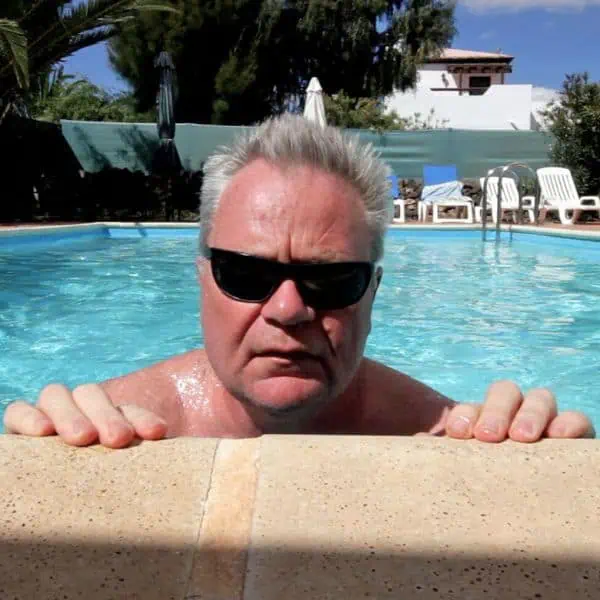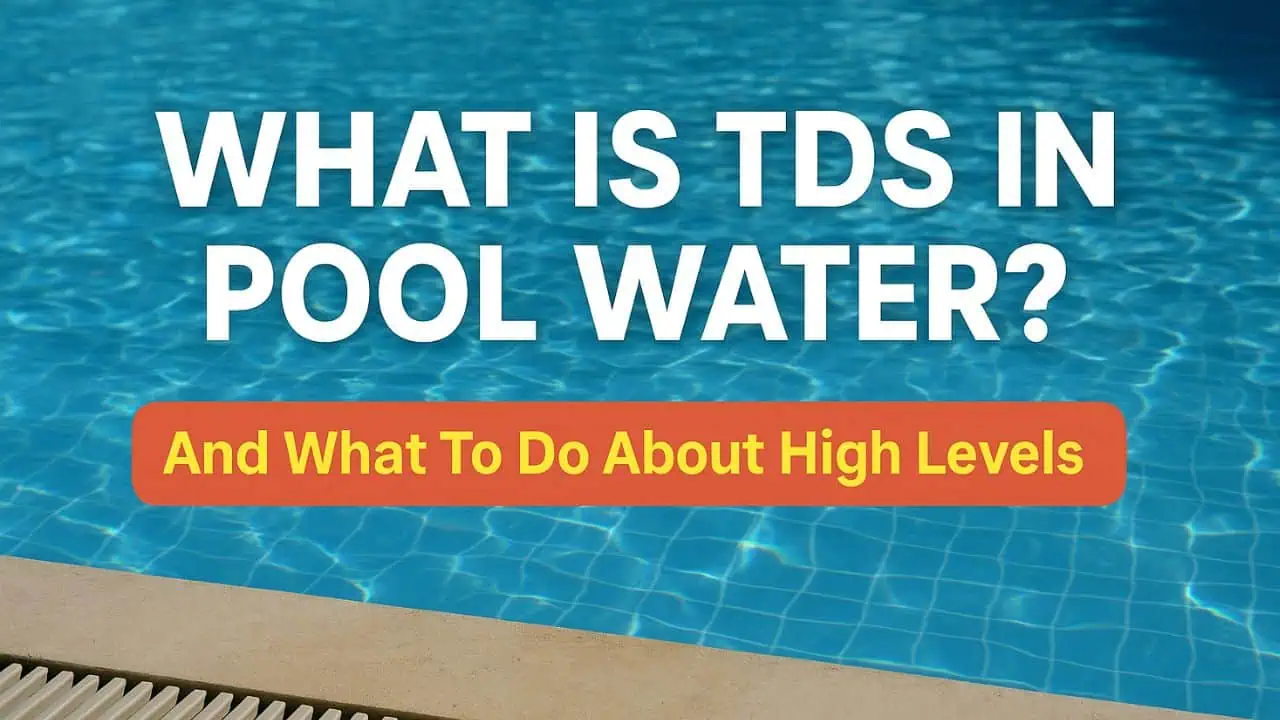When I first moved into my house with a pool I hadn’t a clue how pool vacuums work but I did some research online (as you are doing) and I asked a friend with a pool. This is what I found out.
In many ways, pool vacuums work just like a regular vacuum you would use in your home except that, instead of sucking in air, it sucks in water. They both suck up dirt and filter the dirt out as they go.
But of course, the way you operate the pool vacuum is different and a little more labor-intensive than just plugging a regular vacuum into an electrical outlet.


Why do you need to vacuum?
You might ask doesn’t the filter system do that? The pool’s filter system does a great job of keeping the water clean in a pool. Unfortunately, it can only clean the dirt from the water that passes through it.
Dirt, including sand, waterlogged leaves, and other debris often falls to the bottom of the pool and generally stays there. The pool filter system cannot move that debris so it needs some help and that is where the pool vacuum comes in. Vacuuming leaves from a pool – my advice.
So how does a pool vacuum work?
A manual pool vacuum cleaner makes use of the pool filter system to operate. The filter system has a pump that sucks in water from the pool skimmers which then passes it through a sand, DE or cartridge filter to remove any dirt. It then returns clean water to the pool via the water inlets, waterfall etc.
What happens when you vacuum a pool is that, instead of water being sucked in directly from the pool skimmers, a pool hose is plugged into the skimmer. This is connected to a vacuum head on a long pool pole.
The water is then sucked in through the vacuum head from the bottom of the pool as it is pushed around. The filter then removes the dirt that the vacuum head picks up and returns the clean water to the pool.
What is the difference between manual, automatic and robot pool vacuums?
Manual pool vacuums
Unsurprisingly, manual vacuuming means that you do everything yourself.
You brush the pool sides, you connect up the pool vacuum hose to the pool vacuum head and the pool pole and you physically move the manual pool vacuum around the bottom of the pool to remove the dirt. The dirt is then trapped in the pool’s filtration system.
Once you have finished you have to disconnect everything and do things like backwash the filter.
Read: My pick of the best pool vacuum heads
Automatic pool vacuums
This means you do all of the preparation work yourself but instead of connecting a vacuum head and pole to the pool hose you connect an automatic vacuum cleaner instead. These are known as suction-side pool vacuums.
This vacuum head then moves around the bottom of the pool in a random way vacuuming the dirt as it goes. You can go off and leave it running while you do something else. You still need to disconnect everything and perhaps backwash the filter.
As well as these automatic pool cleaners that attach to the suction side of the system there are also pressure-side pool vacuums. These attach to a pool jet and are driven by the water passing through them. They have their own filters which collect the dirt during the cleaning process without it going through the pool’s filter.
Robot pool vacuums
A robotic pool cleaner is almost fully automated. All you need to do is lower it into your pool, plug it into an electrical outlet and off it goes.
It collects all of the dirt within its own built-in filter and knows where it has cleaned and where it hasn’t so it will clean the entire pool, including the walls which it can climb and the waterline! When it is finished you can just take it out of the pool and easily empty the filter.
The robotic cleaner that is most recommended by members of the many Facebook pool cleaning groups is the Dolphin Nautilus CC Plus Automatic Robotic Pool Cleaner (check price on Amazon) which, surprisingly, is nowhere near the most expensive available.
I have never regretted buying my Dolphin. It is easily the best thing I have bought for my pool as it saves me hours of work. Read: Best Robotic Pool Cleaners: Are they worth it?
Do you have to vacuum pool?
In one way or another, yes you do. If you don’t then the build-up of debris on the bottom will just increase leading to poor water chemistry and it will promote the growth of algae.
Of course, you don’t actually have to do it yourself. You can contract with a professional pool cleaning service to come in regularly and clean your pool. That will obviously be more expensive than doing it yourself.
How do you hook up a pool vacuum?
There are two ways to hook up the pool vacuum cleaner to the filter system.
- The first I have already mentioned is to connect it to the skimmer and vacuum from there.
- Some pools have a dedicated vacuum hose connection which makes hooking up the vacuum even easier and is ideal for attaching an automatic pool cleaner which can then just be left in the pool.
Of course, if you have a robotic pool cleaner, this will not need to be hooked up as it operates totally independently of the pool’s filter.
Do you remove the skimmer basket when vacuuming a pool?
A good question. If you intend to plug the pool hose directly into the skimmer housing output pipe then you will need to remove the skimmer basket first.
For most makes of skimmer, it is possible to buy a skimmer vacuum plate that fits over the basket and then the pool hose connects to a fitting in that. This has the advantage that any large pieces of debris, such as leaves, will be trapped in the skimmer basket and will not go down the pipework to the pump. I have tried this but had limited success so I plug straight into the skimmer pipe.
You can read my full article – Do you remove the skimmer basket when vacuuming a pool?
What setting should my pool pump be on to vacuum
There are two possible filter multiport valve settings to use when vacuuming a pool.
Filter
This would be used when the pool bottom is not very dirty. The water would be sent through the filter which would remove the debris and return the water to the pool.
Waste
This setting would be used if the pool bottom is very dirty. If you used the filter setting then it is likely that the filter will quickly become clogged and start to lose its suction.
Using the waste setting, “vacuuming to waste” the water would not pass through the filter but instead would go straight down the waste pipe to either the sewer system or into the yard/garden.
When you use this setting the water level in the pool will start to go down quite quickly so you should top the pool up before you start. If the water level reaches the bottom of the skimmer while you are vacuuming you should stop and top the pool up again before resuming.
My article All the pool filter settings explains will clarify all of the settings on the multiport valve.
How often should you vacuum your pool?
Once per week would be the normal frequency but it does depend on things such as:
- How much use the pool gets. The more often it is used, the more dirt will get carried in and the more frequent the need for vacuuming.
- If the pool is surrounded by trees and other vegetation then it is likely you will need to vacuum more frequently. That would be particularly true in autumn when the trees are dropping their leaves.
You can read my full article – How often should you vacuum a pool?
FAQ
Why is my pool dirty after I vacuum it?
This could be for a few reasons. The most likely scenarios are:
1. the pool filter is very dirty and in need of backwashing or removing and cleaning if it is a cartridge type filter.
2. you vacuumed too quickly so you disturbed much of the dirt which has become suspended in the water, instead of it getting sucked into the vacuum. The dirt will then settle back onto the bottom afterward.
Should you brush a pool before vacuuming?
Brushing the walls, steps and ladders before you vacuum is good practice to remove and dirt that may be lodged there. You should do this gently to prevent disturbing any dirt on the pool floor and also allow any dirt you have dislodged to settle before vacuuming.
Can you leave pool vacuum in pool?
Manual or automatic pool vacuums that you connect to the skimmer port should not be left in a pool as then the skimmer will not be able to function. If you have a separate vacuum port then you can leave an automatic pool cleaner in the pool. Some robotic pool cleaners can also be left in a pool and be programmed to clean on certain days/times.







Leave a Reply